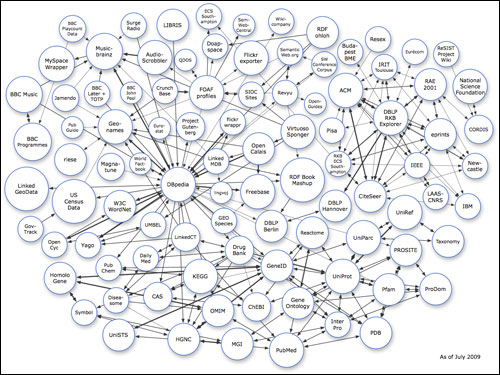'News Linked Data Summit' on Fleet Street
I spent Friday at a fascinating event at the St Bride Foundation, just off Fleet Street, discussing the application of the 'web of data' to the news industry. I'd helped organise the 'News Linked Data Summit', along with John O'Donovan and Silver Oliver of the BBC, Richard Wallis of Talis, and Martin Moore of the Media Standards Trust. The day was held under the Chatham House Rule, and so I'm not going to go into too much detail, but suffice it to say I don't go to that many meetings where I'm writing down phrases like "retro-fit plausible URIs".

Fresh from launching data.gov.uk, Nigel Shadbolt was with us. When he mentioned the day on Twitter, a couple of people asked where they could find out about it. We'd actually deliberately kept it low-key for two reasons. Firstly, with the notable exceptions of the BBC and the New York Times, in terms of publishing and consuming RDFa, this was a little bit of a tentative toe-in-the-water for most of us. Secondly, it is a lot easier to get representatives from a set of competing news organisations around the table if it is away from the glare of publicity.
As ever, when I go to a 'Linked Data' event, I came away enthused by the possibilities, and somewhat nervous about the implementation of vastly complex URI schema and reference materials. And utterly daunted by the prospect of trying to explain it to the non-technically minded.
I do believe, though, that the release of significant amounts of state-collected data is a step-change. These datasets are increasingly in formats that approach Linked Data standards, even if they aren't quite all there yet,. As part of the day I gave a presentation on 'What is the value of Linked Data to the news industry?', which I've published this morning over on the Inside Guardian blog.
The potential for Linked Data in the very short future is very exciting, even for those outside of the news industry. It’s excellent to see the news industry truly embracing the new data and media environments. That’s a lot of muscle that’s been going wasted, and we’ve already seen some truly brilliant innovations now that it’s in play. One cannot help but be excited for this future. The potential for this information exchange is endless, and the possibilities when the world is fully “linked in” are truly mind-boggling.